This is an old revision of this page, as edited by Rjjiii (talk | contribs) at 03:44, 20 April 2024 (→References: syncing bibliography from draft, sources will be used in updates coming soon; separate short and full citations to cite different parts of longer works including books). The present address (URL) is a permanent link to this revision, which may differ significantly from the current revision.
Revision as of 03:44, 20 April 2024 by Rjjiii (talk | contribs) (→References: syncing bibliography from draft, sources will be used in updates coming soon; separate short and full citations to cite different parts of longer works including books)(diff) ← Previous revision | Latest revision (diff) | Newer revision → (diff) For other uses, see Night (disambiguation).Period of darkness during a 24-hour day
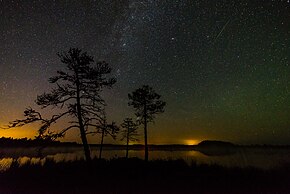
Night or nighttime is the period of ambient darkness when the Sun is below the horizon.
The word can be used in a social sense as the time between bedtime and morning. In common communication, it is a farewell (sometimes lengthened to "good night"), mainly when someone is going to sleep or leaving.
Astronomical night is the period between astronomical dusk and astronomical dawn when the Sun is between 18 and 90 degrees below the horizon and does not illuminate the sky. As seen from latitudes between about 48.56° and 65.73° north or south of the equator, complete darkness does not occur around the summer solstice because, although the Sun sets, it is never more than 18° below the horizon at lower culmination, −90° Sun angles occur at the Tropic of Cancer on the December solstice and Tropic of Capricorn on the June solstice, and at the equator on equinoxes. And as seen from latitudes greater than 72° north or south of the equator, complete darkness does not occur in both equinoxes because, although the Sun sets, it is never more than 18° below the horizon.
The opposite of night is day (or "daytime", to distinguish it from "day" referring to a 24-hour period time). Twilight is the period of night after sunset or before sunrise when the Sun still illuminates the sky when it is below the horizon. At any given time, one side of Earth is bathed in sunlight (the daytime), while the other side is in darkness caused by Earth blocking the sunlight. The central part of the shadow is called the umbra, where the night is darkest.
Natural illumination at night is still provided by a combination of moonlight, planetary light, starlight, zodiacal light, gegenschein, and airglow. In some circumstances, aurorae, lightning, and bioluminescence can provide some illumination. The glow provided by artificial lighting is sometimes referred to as light pollution because it can interfere with observational astronomy and ecosystems.
Duration and geography
On Earth, an average night is shorter than daytime due to two factors. Firstly, the Sun's apparent disk is not a point, but has an angular diameter of about 32 arcminutes (32'). Secondly, the atmosphere refracts sunlight so that some of it reaches the ground when the Sun is below the horizon by about 34'. The combination of these two factors means that light reaches the ground when the center of the solar disk is below the horizon by about 50'. Without these effects, daytime and night would be the same length on both equinoxes, the moments when the Sun appears to contact the celestial equator. On the equinoxes, daytime actually lasts almost 14 minutes longer than night does at the equator, and even longer towards the poles.
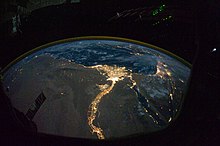
The summer and winter solstices mark the shortest and longest nights, respectively. The closer a location is to either the North Pole or the South Pole, the wider the range of variation in the night's duration. Although daytime and night nearly equalize in length on the equinoxes, the ratio of night to day changes more rapidly at high latitudes than at low latitudes before and after an equinox. In the Northern Hemisphere, Denmark experiences shorter nights in June than India. In the Southern Hemisphere, Antarctica sees longer nights in June than Chile. Both hemispheres experience the same patterns of night length at the same latitudes, but the cycles are 6 months apart so that one hemisphere experiences long nights (winter) while the other is experiencing short nights (summer).
In the region within either polar circle, the variation in daylight hours is so extreme that part of summer sees a period without night intervening between consecutive days, while part of winter sees a period without daytime intervening between consecutive nights.
Beyond Earth
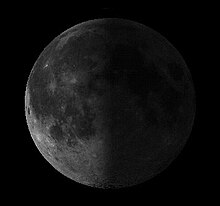
The phenomenon of day and night is due to the rotation of a celestial body about its axis, creating an illusion of the sun rising and setting. Different bodies spin at very different rates, some much faster than Earth and others extremely slowly, leading to very long days and nights. The planet Venus rotates once every 224.7 days – by far the slowest rotation period of any of the major planets. In contrast, the gas giant Jupiter's sidereal day is only 9 hours and 56 minutes. The length of a planet's orbital period determines the length of its day-night cycle as well - Venus has a rotation period of 224.7 days, but a day-night cycle just 116.75 days long due to its retrograde rotation and orbital motion around the Sun. Mercury has the longest day-night cycle as a result of its 3:2 resonance between its orbital period and rotation period - this resonance gives it a day-night cycle that is 176 days long. A planet may experience large temperature variations between day and night, such as Mercury, the planet closest to the sun.
The day-night cycle is one consideration for planetary habitability or the possibility of extraterrestrial life on distant exoplanets. Some exoplanets, like those of TRAPPIST-1, are tidally locked. Tidally locked planets have equal rotation and orbital periods, so one side experiences constant day, and the other side constant night. In these situations, astrophysicists believe that life would most likely develop in the twilight zone between the day and night hemispheres.
Effects on life
Biological
The disappearance of sunlight, the primary energy source for life on Earth, has dramatic effects on the morphology, physiology and behavior of almost every organism. Some animals sleep during the night, while other nocturnal animals, including moths and crickets, are active during this time. The effects of day and night are not seen in the animal kingdom alone – plants have also evolved adaptations to cope best with the lack of sunlight during this time. For example, crassulacean acid metabolism is a unique type of carbon fixation which allows some photosynthetic plants to store carbon dioxide in their tissues as organic acids during the night, which can then be used during the day to synthesize carbohydrates. This allows them to keep their stomata closed during the daytime, preventing transpiration of water when it is precious.
Social
Further information: Nightlife and Timeline of lighting technology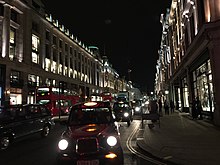
The first constant electric light was demonstrated in 1835. As artificial lighting has improved, especially after the Industrial Revolution, nighttime activity has increased and become a significant part of the economy in most places. Many establishments, such as nightclubs, bars, convenience stores, fast-food restaurants, gas stations, distribution facilities, and police stations now operate 24 hours a day or stay open as late as 1 or 2 a.m. Even without artificial light, moonlight sometimes makes it possible to travel or work outdoors at night.
Nightlife is a collective term for entertainment that is available and generally more popular from the late evening into the early hours of the morning. It includes pubs, bars, nightclubs, parties, live music, concerts, cabarets, theatre, cinemas, and shows. These venues often require a cover charge for admission. Nightlife entertainment is often more adult-oriented than daytime entertainment.
Cultural and psychological

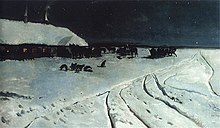

Night is often associated with danger and evil, because of the psychological connection of night's all-encompassing darkness to the fear of the unknown and darkness's hindrance of a major sensory system (the sense of sight). Nighttime is naturally associated with vulnerability and danger for human physical survival. Criminals, animals, and other potential dangers can be concealed by darkness. Midnight has a particular importance in human imagination and culture.
Upper Paleolithic art was found to show (by André Leroi-Gourhan) a pattern of choices where the portrayal of animals that were experienced as dangerous were located at a distance from the entrance of a cave dwelling at a number of different cave locations.
The belief in magic often includes the idea that magic and magicians are more powerful at night. Séances of spiritualism are usually conducted closer to midnight. Similarly, mythical and folkloric creatures such as vampires, ghosts and werewolves are described as more active at night. In almost all cultures, legendary stories warn of the night's dangers.
The cultural significance of the night in Islam differs from that in Western culture. The Quran was revealed during the Night of Power, the most significant night according to Islam. Muhammad made his famous journey from Mecca to Jerusalem and then to heaven in the night. Another prophet, Abraham, came to realize the supreme being in charge of the universe at night.
People who prefer nocturnal activity are called night owls.
See also
Notes
- "Definition of good night". merriam-webster.com. Retrieved 31 December 2019.
- "Day Length". University Of Guelph. Archived from the original on 27 May 2021. Retrieved 27 May 2021.
- Seidelmann, P. K.; Abalakin, V. K.; Bursa, M.; Davies, M. E.; et al. (2001). "Report of the IAU/IAG Working Group on Cartographic Coordinates and Rotational Elements of the Planets and Satellites: 2000". HNSKY Planetarium Program. Archived from the original on 26 December 2018. Retrieved 2 February 2007.
- Williams, Matt (7 February 2017). "How Long is a Day on Venus?". Universe Today. Retrieved 14 February 2024.
- "Space Topics: Compare the Planets: Mercury, Venus, Earth, The Moon, and Mars". Planetary Society. Archived from the original on 28 July 2011. Retrieved 12 April 2007.
- "Mercury: Facts - NASA Science". science.nasa.gov. Retrieved 14 February 2024.
- Clery, Daniel (1 November 2017). "Earth-sized alien worlds are out there. Now, astronomers are figuring out how to detect life on them". Science. American Association for the Advancement of Science. Retrieved 29 February 2024.
- Walla, Emily (10 April 2019). "Powerful Particles and Tugging Tides May Affect Extraterrestrial Life". University of Arizona News.
- Lewis, Briley (5 April 2023). "Aliens could be hiding in 'terminator zones' on planets with eternal night". Space.
- Matulka, Rebecca; Wood, Daniel (22 November 2013). "The History of the Light Bulb". Department of Energy. Archived from the original on 25 May 2021. Retrieved 25 May 2021.
- "Nightlife – Definition of nightlife by Merriam-Webster". merriam-webster.com.
- moma learning. MoMA. Retrieved May 23, 2021.
- Leroi-Gourhan; Lewis-Williams, JD (24 April 2014). Zvelebil, Marek; Jordan, Peter; Cummings, Vicki (eds.). Art for the Living, in, The Oxford Handbook of the Archaeology and Anthropology of Hunter-Gatherers (Ebook). OUP Oxford. ISBN 9780191025266. Retrieved 26 May 2021. The source doesn't state whether the location "painted in the depths" had natural light or no natural light.
- Klein, Stefan (2008). Time. p. 20.
References
- Beaumont, Matthew (2014), "The Mystery of Master Humphrey: Dickens, Nightwalking and "the Old Curiosity Shop"", The Review of English Studies, vol. 65, no. 268, pp. 118–136, ISSN 0034-6551, retrieved 8 April 2024
- Borges, Renee M.; Somanathan, Hema; Kelber, Almut (2016). "Patterns and Processes in Nocturnal and Crepuscular Pollination Services". The Quarterly Review of Biology. 91 (4): 389–418. doi:10.1086/689481.
- Borges, Renee M. (March 2018). "Dark Matters: Challenges of Nocturnal Communication Between Plants and Animals in Delivery of Pollination Services". The Yale journal of biology and medicine. 91 (1): 33–42. PMID 29599655.
- Boyer, Anne (2019). "The Fall of Night". Lapham’s Quarterly. Vol. 12, no. 1. ISSN 1935-7494.
- BRAIN (2004). Brain Resources and Information Network (BRAIN). "Brain Basics: Understanding Sleep". National Institute of Neurological Disorders and Stroke. Archived from the original on 23 January 2005. 2023 update.
- Bronfen, Elisabeth (2013). Night passages: philosophy, literature, and film. New York: Columbia University Press. ISBN 978-0-231-14798-9.
- Carnegie Institution (10 November 2014). "Biochemistry detective work: Algae at night". ScienceDaily.
- Cell (22 April 2009). "Night vision". Nature. 458 (948). doi:10.1038/458948a.
- Clery, Daniel (1 November 2017). "Earth-sized alien worlds are out there. Now, astronomers are figuring out how to detect life on them". Science. American Association for the Advancement of Science. Retrieved 29 February 2024.
- Coombs, Amy (30 January 2006). "Cyanobacteria Work the Night Shift". Science. Retrieved 19 April 2024.
- Danthanarayana, W., ed. (1986). Insect Flight. Springer. ISBN 978-3-642-71157-2.
- Dickens, Charles (2012) . "Night Walks". Broadview Anthology of British Literature: The Victorian Era. Vol. 5 (Second ed.). Broadview Press.
- Dunham, Will (29 April 2016). "Slumber Party: Reptiles, like Us, Have REM Sleep and May Dream". Scientific American.
- Dunlap, Jay C.; Loroso, Jennifer J. (2018). "Making Time: Conservation of Biological Clocks from Fungi to Animals". The Fungal Kingdom. American Society for Microbiology. doi:10.1128/microbiolspec.FUNK-0039-2016.
- Edwards, Nina (2018). Darkness: A Cultural History. London: Reaktion Books. ISBN 978-1-78023-982-8.
- Flanders, Tony (5 December 2008). "Rate Your Skyglow". Retrieved 16 April 2024.
- Fricke, Wieland (February 2020). "Energy costs of salinity tolerance in crop plants: night‐time transpiration and growth". New Phytologist. 225 (3): 1152–1165. doi:10.1111/nph.15773.
- Gaston, Kevin J.; Davies, Thomas W.; Bennie, Jonathan; Hopkins, John (December 2012). "Review: Reducing the ecological consequences of night‐time light pollution: options and developments". Journal of Applied Ecology. 49 (6): 1256–1266. doi:10.1111/j.1365-2664.2012.02212.x.
- Harris, James C. (1 May 2004). "The Nightmare". Archives of General Psychiatry. 61 (5): 439. doi:10.1001/archpsyc.61.5.439.
- Herrera, Ana (2009). "Crassulacean acid metabolism and fitness under water deficit stress: if not for carbon gain, what is facultative CAM good for?". Annals of Botany. 103 (4): 645–653. doi:10.1093/aob/mcn145.
- Hewitt, Terry (1997). The complete book of cacti & succulents. New York: Dorling Kindersley. ISBN 978-0-7894-1657-5.
- Hoel, Erik (May 2021). "The overfitted brain: Dreams evolved to assist generalization". Patterns. 2 (5): 100244. doi:10.1016/j.patter.2021.100244.
- Hurkman, Alexis Van (2013). Color Correction Look Book: Creative Grading Techniques for Film and Video. Peachpit Press. ISBN 978-0-13-381847-5.
- Iglesias, Teresa L.; Dornburg, Alex; Warren, Dan L.; Wainwright, Peter C.; Schmitz, Lars; Economo, Evan P. (2018). "Eyes Wide Shut: the impact of dim-light vision on neural investment in marine teleosts". Journal of Evolutionary Biology. 31 (8): 1082–1092. doi:10.1111/jeb.13299. ISSN 1420-9101. PMID 29808568. S2CID 44161422.
- Jacobs, Gerald H. (12 October 2009). "Evolution of colour vision in mammals". Philosophical Transactions of the Royal Society B: Biological Sciences. 364 (1531): 2957–2967. doi:10.1098/rstb.2009.0039. ISSN 0962-8436. PMID 19720656.
- Keimig, Lance (2012). Night Photography: Finding your way in the dark. Taylor & Francis. ISBN 978-1-136-09725-6.
- Kramer, Fritz (24 October 2015). "Silent Movies 101: Color before sound (and why colorization is not always a bad thing)". Movies Silently. Retrieved 6 April 2024.
- Langley, Liz (3 February 2021). "Echolocation is nature's built-in sonar. Here's how it works". National Geographic.
- Leitch, Carmen (13 April 2020). "Even Bacteria Align With the Daily Cycle of Day and Night". Labroots.
- Lewis, Briley (5 April 2023). "Aliens could be hiding in 'terminator zones' on planets with eternal night". Space.
- Lovett, Brian; Leger, Raymond St. J. (2018). "The Insect Pathogens". The Fungal Kingdom. American Society for Microbiology. doi:10.1128/microbiolspec.FUNK-0001-2016.
- Lutz, C. Greg (n.d.). "Louisiana Fisheries - Fact Sheets". Sea Grant. Louisiana State University. Retrieved 19 April 2024.
- Moorcroft, William H. (2005). Understanding Sleep and Dreaming (Second ed.). New York: Springer. ISBN 978-1-4614-6466-2.
- NASA. (2024) "Mercury: Facts". NASA Science. 2024. Retrieved 14 February 2024.
- Patel, Aakash K.; Reddy, Vamsi; Shumway, Karlie R.; Araujo, John F. (2024). "Physiology, Sleep Stages". StatPearls. StatPearls Publishing. Retrieved 18 April 2024.
- Pennisi, Elizabeth; Benthe, H. F.; Haberland, G. (7 May 2021). "Fatal attraction to light at night pummels insects". Science. 372 (6542): 556–557. doi:10.1126/science.372.6542.556.
- Planetary Society (n.d.). "The Terrestrial Planets: Mercury, Venus, Earth, The Moon, and Mars". Space Topics. Archived from the original on 28 July 2011. Retrieved 12 April 2007.
- Rabiger, Michael (2014). Directing: Film Techniques and Aesthetics. CRC Press. ISBN 978-1-136-06686-3.
- Read, Paul (2009). "'Unnatural Colours': An introduction to Colouring Techniques in Silent Era Movies". Film History. 21 (1): 7–46. ISSN 0892-2160.
- Scialdone, Antonio; Howard, Martin (31 March 2015). "How plants manage food reserves at night: quantitative models and open questions". Frontiers in Plant Science. 6. doi:10.3389/fpls.2015.00204.
- Seidelmann, P. K.; Abalakin, V. K.; Bursa, M.; Davies, M. E.; et al. (2001). "Report of the IAU/IAG Working Group on Cartographic Coordinates and Rotational Elements of the Planets and Satellites: 2000". HNSKY Planetarium Program. Archived from the original on 26 December 2018. Retrieved 2 February 2007.
- Shen, Li (9 July 2012). "Night Vision: How Animals See in the Dark". The Outside Story.
- Sokol, Joshua (19 January 2023). "Light pollution is drowning the starry night sky faster than thought". Science. doi:10.1126/science.adg7722.
- Vorster, Albrecht P.; Born, Jan (March 2015). "Sleep and memory in mammals, birds and invertebrates". Neuroscience & Biobehavioral Reviews. 50: 103–119. doi:10.1016/j.neubiorev.2014.09.020.
- Walla, Emily (10 April 2019). "Powerful Particles and Tugging Tides May Affect Extraterrestrial Life". University of Arizona News.
- Williams, Matt (7 February 2017). "How Long is a Day on Venus?". Universe Today. Retrieved 14 February 2024.
Further reading
Culture
- "International Night Studies Network". the CISAN-UNAM (México), the Center for Interdisciplinary Research on Montreal, McGill (Canada), the Institut de Géoarchitecture and the IDA-Brest (France). Archived from the original on 15 May 2021. Retrieved 23 May 2021.
{{cite web}}: CS1 maint: bot: original URL status unknown (link) - Shaw, Robert (2 February 2018). The Nocturnal City (Ebook). Taylor & Francis. ISBN 9781317197225. Retrieved 23 May 2021 – via Google Books.
...This book looks at the relationship between night and society in contemporary cities..
External links
Listen to this article (4 minutes)- [REDACTED] Media related to Night at Wikimedia Commons
- [REDACTED] Quotations related to Night at Wikiquote
- [REDACTED] The dictionary definition of night at Wiktionary
| Parts of a day | ||
|---|---|---|
| Daytime |  | |
| Twilight | ||
| Night | ||
| Related | ||